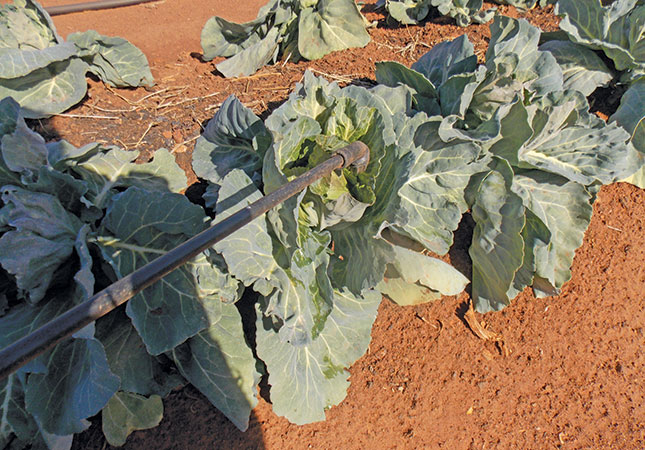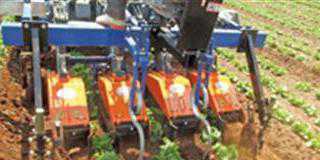
Photo: Bill Kerr
Nonetheless, there is still a place for the humble knapsack sprayer. For one, it’s ideal for selectively spraying a young crop that initially covers only a small percentage of the land. The knapsack is also more effective in certain circumstances.
A case in point is a cabbage crop that has just entered the first stage of head formation. If aphids are present at this time, many will migrate into the loosely developing head, where they are extremely difficult to control.
A boom sprayer cannot reach the inner leaves of this crop. Products registered for post-planting aphid control are ‘trans-laminate systemic’: when sprayed on a leaf, they are absorbed into it. But the chemical is not carried to unsprayed leaves, so the aphids on the inner leaves remain untouched. It is therefore pointless applying more spray.
At this critical stage, a knapsack sprayer can be highly effective and economical. Begin by mixing the product in a large tank or vessel so that you don’t have to mix a small quantity each time you refill the knapsack.
Go down each row, directing the nozzle to slightly above where head formation is starting and where aphids forage. Move at a slow walking pace from head to head. This gives far more effective penetration of the product into the developing head than is possible with a boom sprayer. About 50 plants can be sprayed per minute.
A word of caution: it is natural to want to move the nozzle to the adjoining row and try to spray more than one row at a time. Avoid doing this; it actually slows down the process and you risk missing some plants.
Using a knapsack sprayer in this way, you can spray 3 000 plants per hour or about half a hectare per day. You will save insecticide, as well as fuel, because you don’t have to use your tractor.
Moreover, as noted, a knapsack is more effective. Proper aphid control in cabbages has become very important since the arrival of brassica stunting disorder.
Other uses
The knapsack sprayer can also be used for spot spraying where, at a later stage, single plants might house aphid colonies. This saves you from having to spray the whole land.
If you need to apply a fruit fly bait to cucurbits, use a knapsack sprayer to do so; it is economical, convenient and effective.
For this application, take the whorl plate out of a cone nozzle; this will produce a jet with large droplets, which are more attractive to the flies. The jet will also travel much further, saving you from moving through the land with a tractor, which crushes runners.
This setup, using plain water, is also useful for dousing fires.
A diaphragm model
When choosing a knapsack, don’t go for the cheapest model. Choose one with a diaphragm; this is easy to replace and more efficient than a piston.
You can also make a replacement diaphragm from an old car inner tube that will last for years.
Bill Kerr is a vegetable specialist and a breeder of a range of vegetables.












